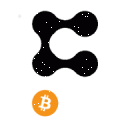
BIOTAsphere founder Terry Shane presented a use case called "KUPkrush" for IOTA , which has received great recognition within the IOTA community and also from the IOTA Foundation . Shane, an IOTA enthusiast from the United States, wants to use IOTA Tangle technology to recycle disposable paper cups, for example, Starbucks, McDonald's or other cafes, turning "25 cents into a $ 150 billion project of dollars"
In an online presentation, Shane explained that recycling disposable paper cups is a huge global environmental problem that cannot be solved by today's technologies. As Shane notes, more than 600 billion paper cups are produced each year. Of these, although the cups can be recycled, more than 99% are currently found in landfills, and less than 1% are recycled and reused.
Shane also noted that governments around the world are considering introducing a 25-cent fee for the use of disposable paper cups. This tax, Shane said, will not change the fact that the cups are still not recycled. In addition, the problem is extremely complex and the consumer can take primary responsibility for solving it. From a technical point of view, DLT (Distributed LEDGER Technology), especially that with free transactions like IOTA , is ideal for developing a solution to the problem.
To this end, bIOTAsphere will give each paper cup a unique identity thanks to a digital twin via a QR code which will be applied to the cup during production. Thus, the cup can be traced throughout its life cycle via the IOTA Tangle. In addition, a deposit is charged for each cup, which is already included in the price in most countries, and which is assigned to the digital twin using an IOTA address .
This financial incentive is divided between the consumer (10 cents), the producer (1 cent) and the retailer (2 cents). However, the deposit will only be returned to all parties concerned if the consumer has the cups in a special machine. To this end, bIOTAsphere is developing the KUPkrush automatic dispenser, which will be widely adapted and placed in the places where consumers are most likely to throw their paper cups.
Once the QR code has been scanned by the machine, the deposit is refunded to all parties concerned. The vending machine operates via a smartphone. In addition, the owner of the vending machine can earn money because the data collected by the vending machine is paid (5 cents). After elimination, the other players in the ecosystem can also earn money: the garbage collection (3 cents), the dump (1 cent) and the pulp and paper factory (1 cent). This encourages all stakeholders to promote recycling.
As Shane also points out, market acceptance is a key criterion for the success of the project. This is where FISC, a non-profit foundation representing all stakeholders in the ecosystem, should play a key role. If a cup is not returned within 30 days, the 25 cents will not be lost, but will be distributed to the waste community, FISC and bIOTAsphere via a smart contract.
Hans Moog, developer at the IOTA Foundation , praises the application in the most acute tones. He also pointed out that the use case ideally links data and value transactions with the IOTA token , proving the opposite of all critics who believe that the IOTA token has no use case:
It's an incredible use case not only for adoption, but also for making the world a better place, and it shows just how important the data transaction aspect is. Critics generally ask, "Why would people use tokens if they can just use 0 value transactions?" or “Why would we use IOTA for data transactions if we had bittorrent for decades?”
This use case is a wonderful combination of the two aspects of the protocol that wouldn't work without the other and it really asks these questions because it gives a very concrete example of why and how these protocol features can and will be combined around the world. real!
A user on Twitter asked Terry how long it would take IOTA to get the performance of this application. According to the user, 76,000 transactions per second are necessary, even if only 20% recycle their mug.
@io_terry made a great presentation, a great use case! It is your responsibility / SI to keep the promise of ITOA. This use case alone requires an average of 76,000 GST. How many months / years do you hope to reach this level of performance? pic.twitter.com/AXzs6o2oxk
- Corien Koolen (@CorienKoolen) June 5, 2020
Shane responded to this:
We won't reach this level of adoption for many years, but don't be fooled by the 20% repayment rate we use to show what is possible if we are extremely conservative. In reality, with these incentives, I would expect 80% to 95% of the cups to be recycled.
Moog also said the rate will be much higher. According to Moog, scalability for this can only be achieved by sharing:
I suppose it would require even more GST as an estimate of 20% is most likely too low (not immediately but if it would be used globally). Since this is only a single use case, it becomes very clear that this can only be done with partitioning. And it also becomes very clear that it would be very logical for this sharing to be based on location using a geographic map of the real world where all the actors who interact "see" each other's transactions. This is exactly what we are working on with IOTA .












